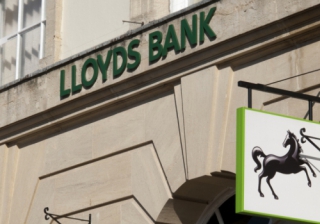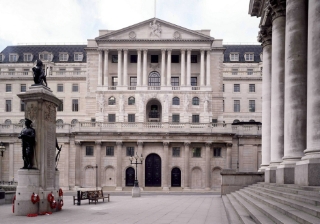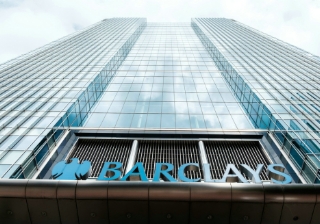Investors turn to infrastructure funds
Investec Wealth & Investment has increased its clients’ overall exposure to infrastructure funds by over one-third over the last 12 months.

And as a result is now one of the largest shareholders in four of the largest publicly quoted funds - Bilfinger Berger, International Public Partnerships, John Laing Infrastructur and HICL infrastructure.
Over the last year, these funds have performed strongly relative to the FTSE 100 as shown by the table below. Share prices have not suffered the volatility exhibited by the wider stock market and dividends have been increased.
In the wake of stock market uncertainty investors have been seeking alternative areas in which to deploy their funds. Infrastructure funds are gaining popularity because they offer investors a healthy dividend with a reliable, long term income stream that is partly inflation-linked. They also have a relatively low correlation to equities in the pattern of their returns.
The market value of listed funds on the London Stock Exchange has doubled over the past three years as more funds have gained listings for their shares and existing funds have raised fresh capital. This trend is likely to continue as new projects will require more private funding in the future.
Infrastructure funds comprise three distinct areas: social assets such as schools and hospitals, where a private company is paid to make the facility available, by building and operating it under a PFI or PPP scheme; economic assets such as train rolling stock and toll motorways, where the private operator is paid based on usage of the asset; and utilities.
In line with the evolution of this asset class, IW&I is continuing to encourage its clients to include infrastructure as a standard part of their portfolio.
However, IW&I warns that investors need to scrutinise the choice of funds carefully to understand where they stand on the risk spectrum. A fund investing in a broad spread of contracts, but with the emphasis on the lower risk PFI deals, should generate gross returns to investors of around 7% annually and be a very suitable instrument for diversification from equity oriented portfolios.
If on the other hand there is greater emphasis on the higher end of the risk spectrum, then expected returns might be more like 10-11% per annum. Given the higher economic, regulatory or political risk involved, however, an investment in such a fund might not provide effective diversification with an equity orientated portfolio.
Chris Hills, chief investment officer at Investec Wealth & Investment, said:
“Historically, infrastructure may not have been a word that tripped off investors’ tongues but this asset class is becoming increasingly relevant to the needs of many retail investors.
"Infrastructure funds have held up well in the recent stock market upheaval and with no sign of any increase in base rates for savers, we’re expecting the income available from infrastructure to be one of the key investment attractions of 2012.”
Over the last year, these funds have performed strongly relative to the FTSE 100 as shown by the table below. Share prices have not suffered the volatility exhibited by the wider stock market and dividends have been increased.
In the wake of stock market uncertainty investors have been seeking alternative areas in which to deploy their funds. Infrastructure funds are gaining popularity because they offer investors a healthy dividend with a reliable, long term income stream that is partly inflation-linked. They also have a relatively low correlation to equities in the pattern of their returns.
The market value of listed funds on the London Stock Exchange has doubled over the past three years as more funds have gained listings for their shares and existing funds have raised fresh capital. This trend is likely to continue as new projects will require more private funding in the future.
Infrastructure funds comprise three distinct areas: social assets such as schools and hospitals, where a private company is paid to make the facility available, by building and operating it under a PFI or PPP scheme; economic assets such as train rolling stock and toll motorways, where the private operator is paid based on usage of the asset; and utilities.
In line with the evolution of this asset class, IW&I is continuing to encourage its clients to include infrastructure as a standard part of their portfolio.
However, IW&I warns that investors need to scrutinise the choice of funds carefully to understand where they stand on the risk spectrum. A fund investing in a broad spread of contracts, but with the emphasis on the lower risk PFI deals, should generate gross returns to investors of around 7% annually and be a very suitable instrument for diversification from equity oriented portfolios.
If on the other hand there is greater emphasis on the higher end of the risk spectrum, then expected returns might be more like 10-11% per annum. Given the higher economic, regulatory or political risk involved, however, an investment in such a fund might not provide effective diversification with an equity orientated portfolio.
Chris Hills, chief investment officer at Investec Wealth & Investment, said:
“Historically, infrastructure may not have been a word that tripped off investors’ tongues but this asset class is becoming increasingly relevant to the needs of many retail investors.
"Infrastructure funds have held up well in the recent stock market upheaval and with no sign of any increase in base rates for savers, we’re expecting the income available from infrastructure to be one of the key investment attractions of 2012.”
Breaking news
Direct to your inbox:
More
stories
you'll love:
This week's biggest stories:
This week's biggest stories:
Lloyds
Lloyds sets aside extra £4bn for high-LTI mortgage lending

Santander
Santander to acquire TSB in £2.65bn deal

Bank Of England
Bank of England issues first-of-its-kind fine of £11.9m

Regulation
Lenders urged to prepare for court ruling on commissions as motor finance complaints surge

Government
Government confirms launch of permanent Freedom to Buy mortgage scheme

FCA
FCA fines Barclays £42m over financial crime risks
